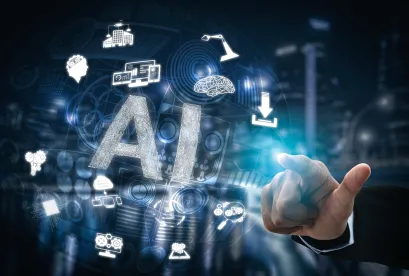With the advent of OpenAI’s ChatGPT, GitHub Copilot, and Google’s Bard, generative artificial intelligence (AI) is all the rage from students looking for an easy answer to c-suite executives hoping to stay ahead of the game. Less than six months since ChatGPT hit the scene, it’s obvious generative AI is here to stay and is already upending how business is done.
Here are a few ways the Fashion Team at AFS anticipates generative AI transforming the fashion industry:
1. The Design is Right
The design room just got a bit more crowded with a new member and it’s here to stay. Generative AI has the capability of churning out designs, patterns, and color schemes in rapid succession and with minimal human involvement. In doing so, it will likely consider the most recent trends by scanning web and social media activity and learning what consumers are searching for, raving about, and moving on from. While designers will be able to get from sketch to production quicker than ever before, it’s not always clear who actually owns those AI-generated designs. The answer, as any great attorney would say, depends.
If there’s substantial input and involvement from actual humans, then the resulting work may be protectible by copyright laws, at least in part. If not, then the designs may be public domain, meaning that the original “creator” would not be able to prevent a third party from using the designs, patterns, or other works. And lastly, there’s no guarantee that the generative AI didn’t use or reference a protected design. If an AI-generated work is “too close” to the referenced design, it could expose the user of the AI-generated work to infringement claims. All this to say, there’s no doubt generative AI will be used in design rooms from here on out, so the need for legal to be involved throughout the design process will be even more critical than before.
2. Whose Slogan Is It Anyway?
The same party crasher of design rooms will also make its way to the marketing and advertising teams. Currently, smart and witty editors can spend hours, even days and months, dissecting slogans or catchy hashtags, or finding a clever way to explain the benefits of a product or service. But as generative AI gets smarter (and funnier), what used to be a labor of love may turn into a one-day affair. Generative AI has the capability of quickly generating multiple catchphrases for a given product or service, allowing marketing teams to simply pick and choose from a list of options generated by AI in a matter of seconds. But as with designs, appropriate legal vetting will continue to be vital to determine whether that new slogan, catch phrase, or other AI-generated work will be protectible under intellectual property laws.
3. Are You Smarter than AI?
While we’re all undoubtedly going to jump on the generative AI train at one point or another, it’s important that confidentiality and data privacy remain top of mind. Generative AI “learns” not only from available sources on the internet, but also from the questions and requests users submit to the AI. This means there’s the possibility that proprietary, confidential, or trade secret information could be shared with the AI. While the currently available generative AI platforms claim that they do not “retain” user input, the fact that the AI is learning from the input nevertheless means that the AI has made that input a part of its knowledge database. Given this, establishing proper parameters, including security and technical measures, for when personnel can use generative AI, how they should structure and submit questions and requests, and how to vet AI-generated feedback should be the next task on every company’s to-do list. Ultimately, the trick to using generative AI just may be knowing how to ask the question the right way, without giving away the secret sauce.
4. Who Wants to Be an Influencer?
Just as companies will look for ways for generative AI to help them, so will their vendors, including influencers. Influencers may likely look to AI to help them brainstorm ideas for videos, campaign shoots, and captions. A pro is that this could lead to higher-quality content since the influencer could have more time to spend on production. The potential downside is a loss of originality as two influencers may receive the same or similar results when asking generative AI how best to tout a particular product or service. If AI not only gets smart, but actually learns how to be creative, we may start to see the arrival of AI influencers that post content on-time, only within its provided parameters, with all the legally accurate hashtags.
And on top of that, there are already AI platforms available that create virtual models based entirely on user input (such as eye shape, skin tone, eye color, jaw shape, you name it) and that provide companies with the perfect brand-specific model at fees likely substantially less than a human model. Brands can then take their custom-made model and glam it up with any number of apparel items, accessories, and hair and makeup options in minutes. Gone may be the days of costly and time-consuming photoshoots; painstaking approval processes; or having to worry about an influencer who goes rogue and breaks a morals clause. But don’t forget those influencer “sponsored post” disclosures: the Federal Trade Commission (FTC) has already suggested that the same disclosure rules apply to virtual influencers as to human influencers.
To what extent generative AI changes the influencer space remains to be seen, but as sure as the influx of influencers seemed to pop overnight, it can be certain that the impact of AI will too.
5. Fake or Not Fake
Even as we go to press with this alert, new issues are emerging including the use of AI to make indiscernible “deep fake” images of famous individuals, such as the Pope wearing modern clothing. A brand should think very carefully before experimenting with celebrity deepfakes for its benefit – not all content will necessarily be considered parody or subject to a fair use defense, and in most cases, the celebrity at hand would have enforceable rights of publicity. The implications of deep fake AI images will be discussed in a separate alert, but such use in the fashion industry could have wide-ranging implications.
6. Let’s Make a Deal
Lastly, generative AI has the ability to create contracts, purchase orders, invoices, and, in some cases, even review and redline a document. Relying on such AI-generated documents, however, remains a risky proposition, with most AI-generated legal documents hewing closely to readily available templates. While it may be only a matter of time before generative AI replaces your lawyer, for now even the best AI-generated legal documents should be submitted to counsel for review.






 />i
/>i

